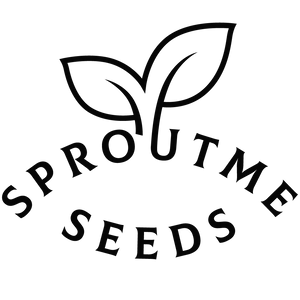Celery
Celery is a crisp and flavorful vegetable that adds depth to soups, salads, and snacks. Growing your own celery ensures access to fresh, pesticide-free produce packed with vitamins, minerals, and dietary fiber.
Preparing for Growing:
- Selecting a planting location: Choose a sunny spot with well-drained soil and consistent moisture.
- Soil preparation: Amend soil with compost or well-rotted manure to improve fertility and drainage.
- Purchasing or preparing containers/pots: Celery can be grown in containers if space is limited. Choose deep containers to accommodate celery's long roots.
Starting from Seeds Indoors:
- Seed preparation: No special preparation needed.
- Choosing suitable pots/containers: Use shallow trays or pots filled with seed-starting mix.
- Sowing and caring for seeds indoors: Sow seeds on the surface of the soil and keep moist. Provide warmth and light for optimal germination.
- Transplanting to larger containers if necessary: Once seedlings have 2-3 true leaves, transplant them into deeper containers to support root growth.
Starting from Seeds Outdoors:
- Soil preparation: Prepare a fine seedbed by removing debris and loosening the soil.
- Selecting appropriate timing and method for outdoor sowing: Sow seeds directly into the garden after the danger of frost has passed in spring or early summer.
- Caring for seeds outdoors: Keep soil consistently moist until seeds germinate, which typically takes 14-21 days.
Growing in Containers/Pots:
- Selecting suitable plants for containers: Choose compact, self-blanching varieties suitable for container growing.
- Container and soil preparation: Ensure containers have good drainage and use a nutrient-rich potting mix.
- Sowing or transplanting plants into containers: Plant seeds or transplant seedlings into containers, spacing them according to package instructions.
- Caring for container plants: Water regularly to keep soil evenly moist and fertilize every 2-3 weeks with a balanced fertilizer.
Transplanting to Garden:
- Soil and planting site preparation: Prepare garden soil by incorporating compost and ensuring proper drainage.
- Correct timing and method for transplanting: Transplant seedlings when they have 3-4 true leaves, spacing them 6-8 inches apart.
- Post-transplant care: Keep soil evenly moist and provide shade to prevent sunscald.
Plant Care:
- Watering: Celery requires consistent moisture, so water regularly, especially during dry spells.
- Fertilizing: Apply a balanced fertilizer every 2-3 weeks to promote healthy growth.
- Weeding: Keep the area around celery plants free of weeds to reduce competition for nutrients.
- Pest and disease management: Monitor for pests such as aphids and slugs, and diseases like leaf blight and root rot. Use organic pest control methods when needed.
Harvesting:
- Determining when plants are ready for harvest: Harvest celery when stalks are crisp and firm, typically 90-120 days after planting.
- Harvesting and storage guidelines: Cut celery stalks at the base with a sharp knife, leaving the plant intact for regrowth. Store harvested celery in the refrigerator wrapped in plastic for up to two weeks.
When to Start from Seeds by USDA Plant Hardiness Zones:
- USDA Zones 3-7: Start seeds indoors 10-12 weeks before the last frost date for transplanting outdoors in spring.
- USDA Zones 8-10: Start seeds indoors 12-14 weeks before the last frost date for transplanting outdoors in early spring.
Fast Facts:
- Planting depth: Surface sowing
- Seed spacing: ¼ inch
- Plant spacing: 6-8 inches
- Number of seeds per pot/container: 2-3 seeds per pot
- Water preferences: Consistently moist soil
- Sun preferences: Full sun to partial shade
- Soil type and other important factors: Rich, well-draining soil with a pH of 6.0-7.0
- Companion Planting: Celery grows well with carrots, onions, and leeks.
- Temperature Preference: Cool weather crop, prefers temperatures between 60-70°F.
- Days to Germination: 14-21 days
- Days to Harvest: 90-120 days from transplanting.







